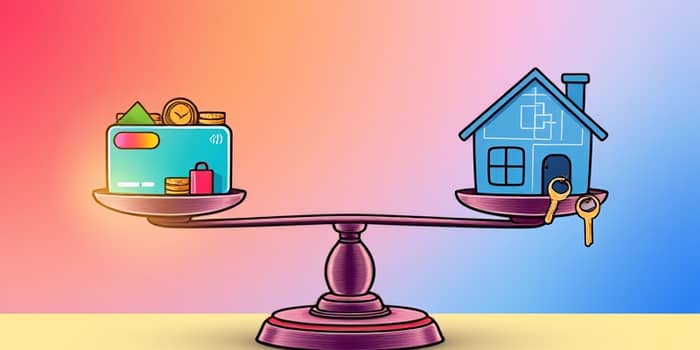
Managing credit effectively means aligning your borrowing with your goals. Through the right choices, you can build a strong financial future and avoid pitfalls that set many back for years.
At its core, credit is an agreement between a lender and a borrower that allows funds, goods, or services to be accessed now and repaid later. It is the backbone of modern finance, empowering individuals to fund dreams and navigate emergencies.
Credit can take many forms—from paying for groceries with a card to financing a home. Understanding its basic definition is the first step toward a lender and a borrower relationships that enhance your financial stability.
There are two primary forms of consumer credit: revolving and installment. Each serves unique needs and carries distinct responsibilities.
Revolving credit offers ongoing access within a set limit, while installment credit involves fixed sums paid over a defined period. Together, they provide unique flexibility and structure for diverse financial plans.
Revolving credit gives you a credit limit you can use, repay, and reuse indefinitely. A common example is a credit card with a $10,000 line of credit. If you charge $2,500, you have $7,500 remaining until repayment restores full access.
Interest is assessed only on the carried balance, and monthly statements require at least a minimum payment. Careful management prevents costly finance charges and keeps your account in good standing.
With a credit card, you can borrow, repay, and borrow repeatedly as long as you respect the terms. This makes it ideal for ongoing needs and unexpected expenses.
Installment credit provides a lump sum upfront, which you repay in equal installments over a predetermined term. Mortgages, auto loans, and student loans follow this model, each offering a clear repayment schedule.
For example, a $30,000 auto loan at 4% interest over 60 months requires fixed monthly payments. Each payment reduces principal and covers interest, ensuring predictable budgeting.
A fixed loan gives predictable payments over set period, making it well-suited for major purchases and long-term investments.
Revolving credit accounts require only a small minimum each month, but paying less than the full balance leads to interest charges that compound quickly. Installment loans include both principal and interest in each payment, eliminating surprise fees.
Failing to meet obligations on either type can trigger penalties, higher rates, or damage to your credit profile, so understanding the cost structure is essential to sound planning.
Minimum amounts keep accounts open but can accrue interest, so strive to pay more than the floor to reduce long-term costs.
Revolving credit heavily influences your score through the utilization ratio—balances relative to limits. High usage can signal risk, while low usage demonstrates responsible behavior.
Installment credit contributes through consistent, on-time payments over a defined period. Once paid off, the account closes, but a strong history remains on your report.
Maintain healthy utilization under recommended threshold to support a robust credit score, and never underestimate the power of punctual payments.
Selecting the right type depends on your goals, timeline, and spending habits. Thoughtful choices can unlock benefits while avoiding unnecessary risk.
Create a budget that factors in both recurring installment payments and variable revolving balances. Automate payments to avoid late fees and consider alerts to track due dates.
Review statements monthly to spot errors or unexpected charges. Building strong habits today lays the groundwork for informed credit and spending decisions tomorrow.
Both revolving and installment credit can be allies in your financial journey when used wisely. By understanding their mechanisms, costs, and impacts, you gain the power to steer your credit path with confidence.
Choose products that match your needs, honor your commitments, and watch as credit becomes a stepping stone toward lasting stability and success.
References













